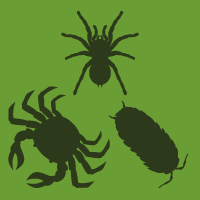Topic Editors


Ticks and Tick-Borne Pathogens

Topic Information
Dear Colleagues,
The TTP conferences have historically convened leading experts and researchers worldwide, focusing on ticks and tick-borne pathogens. This eleventh edition promises to be no different, offering a platform to showcase groundbreaking research, innovative methodologies, and promising discoveries in various facets of tick biology. These encompass tick physiology, microbiome and genomics, taxonomy and the evolution of ticks and tick-borne pathogens, their ecological and epidemiological aspects, pathogenesis, diagnosis, and strategies for control, including immunity and vaccines.
For more information regarding the TTP11 Conference and opportunities to present your research, please visit https://agropecuaria.cigb.edu.cu/ttp11/ or https://zooparaz.net/ttp11/. Furthermore, we invite you to contribute to a Topic in renowned MDPI journals such as Pathogens, Animals, Vaccines, Veterinary Sciences, Arthropoda and Insects.
This Topic offers researchers the chance to publish enhanced and refined versions of their conference contributions, thus extending the impact of their work far beyond the event itself. This proposal represents a valuable opportunity to advance the dissemination of cutting-edge research and foster collaboration within the tick research community—an essential step towards advancing the field. Moreover, this Topic will be a lasting repository of the collective knowledge and insights shared during TTP11. We eagerly anticipate receiving your contributions.
Dr. Alina Rodriguez-Mallon
Dr. Alejandro Cabezas-Cruz
Topic Editors
Keywords
- parasites
- ticks
- tick-borne pathogens
- tick physiology
- tick taxonomy
- vector capacity
- immunity
- tick resistant
- acaricides
- tick control
Participating Journals
| Journal Name | Impact Factor | CiteScore | Launched Year | First Decision (median) | APC | |
|---|---|---|---|---|---|---|

Animals
|
2.7 | 4.9 | 2011 | 16.1 Days | CHF 2400 | Submit |

Arthropoda
|
- | - | 2023 | 15.0 days * | CHF 1000 | Submit |

Insects
|
2.7 | 5.1 | 2010 | 17 Days | CHF 2600 | Submit |

Pathogens
|
3.3 | 6.4 | 2012 | 16.3 Days | CHF 2200 | Submit |

Vaccines
|
5.2 | 8.9 | 2013 | 17.6 Days | CHF 2700 | Submit |

Veterinary Sciences
|
2.0 | 2.9 | 2014 | 20.9 Days | CHF 2100 | Submit |
* Median value for all MDPI journals in the first half of 2024.

MDPI Topics is cooperating with Preprints.org and has built a direct connection between MDPI journals and Preprints.org. Authors are encouraged to enjoy the benefits by posting a preprint at Preprints.org prior to publication:
- Immediately share your ideas ahead of publication and establish your research priority;
- Protect your idea from being stolen with this time-stamped preprint article;
- Enhance the exposure and impact of your research;
- Receive feedback from your peers in advance;
- Have it indexed in Web of Science (Preprint Citation Index), Google Scholar, Crossref, SHARE, PrePubMed, Scilit and Europe PMC.

